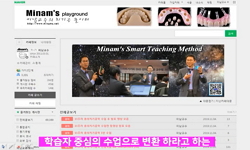기존의 說話文學 대한 硏究는 說話를 文化史的인 面이나 民俗學的인 面과 관련짓거나 記錄文學과 관련을 짓는 측면으로 치중해왔다고 하겠다. 그런데 최근에 이르러 說話文學 자체의 文學...
http://chineseinput.net/에서 pinyin(병음)방식으로 중국어를 변환할 수 있습니다.
변환된 중국어를 복사하여 사용하시면 됩니다.
- 中文 을 입력하시려면 zhongwen을 입력하시고 space를누르시면됩니다.
- 北京 을 입력하시려면 beijing을 입력하시고 space를 누르시면 됩니다.
https://www.riss.kr/link?id=T158311
- 저자
-
발행사항
서울 : 이화여자대학교 대학원, 1984
-
학위논문사항
학위논문(석사) -- 이화여자대학교 대학원 , 국어국문학과 , 1984. 2
-
발행연도
1984
-
작성언어
한국어
- 주제어
-
KDC
813.5 판사항(4)
-
발행국(도시)
서울
-
형태사항
v, 117p. : 삽도 ; 27cm
-
일반주기명
참고문헌: p. 112-115
- 소장기관
-
0
상세조회 -
0
다운로드
부가정보
국문 초록 (Abstract)
Ⅱ장에서 口碑說話의 全體的 構造와 관련된 巨視的 觀點에서 說話口演시 나타난 話者의 性格에 대하여 먼저 살펴보고 이를 대문과 대문에 관련된 微視的 觀點에석 說話 口演시 보여지는 話者의 敍述視點을 그 진행구조와 관련하여 살펴보았다.
巨視的 觀點에서 볼 때 口碑說話의 話者는 外部視點을 취하여 全知的인 시각을 지니고 주로 主人物의 편을 들면서 등장하는 모든 人物의 역할을 해내며 또한 논평적인 태도를 취하고 있는 것으로 나타났다.
微視的 觀點에서 볼 때 口碑說話의 敍述視點은 發端部에서 敍述者的 視點, 展開部에서 作中人物의 視點, 結末部에서 다시 敍述者的 視點, 그리고 說話에 따라 보이기도 하고 보이지 않기도 하는 證示部에 있어서는 觀念的 視點으로 나타났다.
Ⅲ장에서 적극적이고 유능한 話者와 소극적이고 유능하지 못한 話者의 敍述視點의 차이를 살펴보았다.
적극적이고 유능한 話者는 展開部에서 되도록이면 作中 人物의 視點에 입각한 敍述을 보이려고 하는 반면 소극적이고 유능하지 못한 話者는 처음부터 끝까지 敍述者의 視點으로 일관된 敍述을 하고 있음이 드러났다.
Ⅳ장에서 口碑說話의 敍述視點과 古代小說의 敍述視點을對比하여 차이점을 찾아보았다.
口碑說話의 敍述視點이 敍述者的 視點과 作中 人物의 視點으로 혼합된 視點을 보이는 반면 古代小說의 敍述은 해설자적인 敍述者 視點으로 일관됨을 보였다. 이렇게 古代小說의 敍述視點이 敍述者的 視點으로 일관되게 된 원인을 口碑說話는 말로 직접이야기 되는 것이고 小說은 일단 문자화하여 읽혀지는 것이라는 차이점을 지닌 것에서 찾아보았다.
기존의 說話文學 대한 硏究는 說話를 文化史的인 面이나 民俗學的인 面과 관련짓거나 記錄文學과 관련을 짓는 측면으로 치중해왔다고 하겠다. 그런데 최근에 이르러 說話文學 자체의 文學性을 규명하고자 하는 뜻에서 說話의 構造的인 측면으로의 연구가 활발히 진행되고 있다. 本 論文도 이러한 연구 경합의 일환으로 口碑說話의 敍述視點을 살펴봄으로써 그 敍述構造를 알아보고자 하였다.
Ⅱ장에서 口碑說話의 全體的 構造와 관련된 巨視的 觀點에서 說話口演시 나타난 話者의 性格에 대하여 먼저 살펴보고 이를 대문과 대문에 관련된 微視的 觀點에석 說話 口演시 보여지는 話者의 敍述視點을 그 진행구조와 관련하여 살펴보았다.
巨視的 觀點에서 볼 때 口碑說話의 話者는 外部視點을 취하여 全知的인 시각을 지니고 주로 主人物의 편을 들면서 등장하는 모든 人物의 역할을 해내며 또한 논평적인 태도를 취하고 있는 것으로 나타났다.
微視的 觀點에서 볼 때 口碑說話의 敍述視點은 發端部에서 敍述者的 視點, 展開部에서 作中人物의 視點, 結末部에서 다시 敍述者的 視點, 그리고 說話에 따라 보이기도 하고 보이지 않기도 하는 證示部에 있어서는 觀念的 視點으로 나타났다.
Ⅲ장에서 적극적이고 유능한 話者와 소극적이고 유능하지 못한 話者의 敍述視點의 차이를 살펴보았다.
적극적이고 유능한 話者는 展開部에서 되도록이면 作中 人物의 視點에 입각한 敍述을 보이려고 하는 반면 소극적이고 유능하지 못한 話者는 처음부터 끝까지 敍述者의 視點으로 일관된 敍述을 하고 있음이 드러났다.
Ⅳ장에서 口碑說話의 敍述視點과 古代小說의 敍述視點을對比하여 차이점을 찾아보았다.
口碑說話의 敍述視點이 敍述者的 視點과 作中 人物의 視點으로 혼합된 視點을 보이는 반면 古代小說의 敍述은 해설자적인 敍述者 視點으로 일관됨을 보였다. 이렇게 古代小說의 敍述視點이 敍述者的 視點으로 일관되게 된 원인을 口碑說話는 말로 직접이야기 되는 것이고 小說은 일단 문자화하여 읽혀지는 것이라는 차이점을 지닌 것에서 찾아보았다.
다국어 초록 (Multilingual Abstract)
This paper, depending on the recent tendencies, treated with the structural aspect of narrative viewpoint.
In chapter Ⅱ, I attempted to analyze the viewpoint of oral tradition into macroscopical viewpoint and microscopical viewpoint. With the macroscopical viewpoint, it was connected with almighty plural-judical viewpoint. With the microscopical viewpoint, on the countrary, it appeared as the viewpoint of narrater in the beginning stage, that of one of the characters in developing stags, and that of the narrater again in ending stage, and that of idea improving stage which would exist or not in the oral tradition.
In chapter Ⅲ, I treated with the difference between two viewpoint: that of positive and capable narrater, and that of negative and incapable narrater. In the case of the former, he intended to present the viewpoint relying on one of the characters, while the latter, from the beginning to the end, tended to explicate with the viewpoint of the narrater himself.
In chapter Ⅳ, I made on effort to find the differences in comparing the viewpoint of the oral tradition with that of ancient novels. I found that the viewpoint of oral tradition showed the mixed viewpoint : mixture of narrative and character viewpoints, and that, on the countrary, the viewpoint of ancient novels only showed the narrative viewpoint. So I attempted to search for the reason and the intention of such a viewpoint.
Many studies of "oral tradition" have attached importance to relate to the aspect of cultural history, of the folklore, or the recording literature. Recently, however, in order to prove oral tradition to be valuable literary works, we are proceeding t...
Many studies of "oral tradition" have attached importance to relate to the aspect of cultural history, of the folklore, or the recording literature. Recently, however, in order to prove oral tradition to be valuable literary works, we are proceeding the studies of structural aspect of them.
This paper, depending on the recent tendencies, treated with the structural aspect of narrative viewpoint.
In chapter Ⅱ, I attempted to analyze the viewpoint of oral tradition into macroscopical viewpoint and microscopical viewpoint. With the macroscopical viewpoint, it was connected with almighty plural-judical viewpoint. With the microscopical viewpoint, on the countrary, it appeared as the viewpoint of narrater in the beginning stage, that of one of the characters in developing stags, and that of the narrater again in ending stage, and that of idea improving stage which would exist or not in the oral tradition.
In chapter Ⅲ, I treated with the difference between two viewpoint: that of positive and capable narrater, and that of negative and incapable narrater. In the case of the former, he intended to present the viewpoint relying on one of the characters, while the latter, from the beginning to the end, tended to explicate with the viewpoint of the narrater himself.
In chapter Ⅳ, I made on effort to find the differences in comparing the viewpoint of the oral tradition with that of ancient novels. I found that the viewpoint of oral tradition showed the mixed viewpoint : mixture of narrative and character viewpoints, and that, on the countrary, the viewpoint of ancient novels only showed the narrative viewpoint. So I attempted to search for the reason and the intention of such a viewpoint.
목차 (Table of Contents)
- 목차 = ⅲ
- 論文槪要 = ⅳ
- Ⅰ. 序論 = 1
- Ⅱ. 口碑說話에서의 視點 = 7
- A. 視點分類의 諸 理論 = 7
- 목차 = ⅲ
- 論文槪要 = ⅳ
- Ⅰ. 序論 = 1
- Ⅱ. 口碑說話에서의 視點 = 7
- A. 視點分類의 諸 理論 = 7
- B. 巨視的 觀點에서 본 說話의 話者性格 = 16
- C. 徵視的 觀點에서 본 說話의 視點 = 37
- Ⅲ. 話者에 따른 視點의 變化 = 68
- A. '積極的 話者'와 '消極的 話者'의 敍述 視點 差異 = 70
- B. 作中人物과 聽者間의 距離 = 85
- Ⅳ. 古代小說과의 對比 = 88
- Ⅴ. 結論 = 108
- 참고문헌 = 112
- ABSTRACT = 116












